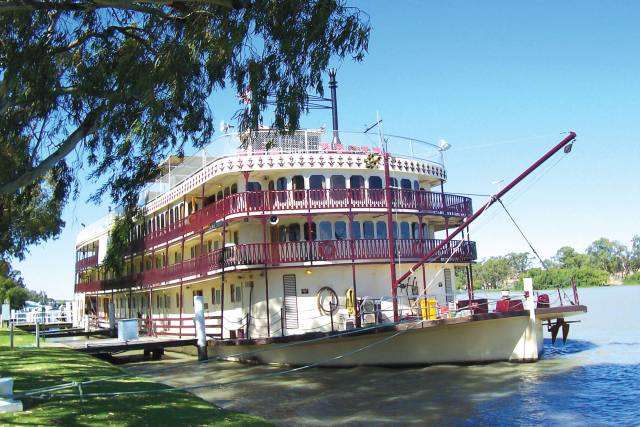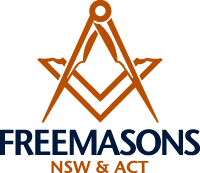
The mighty Murray River

It is the world's fifth largest river and has a history which involves wildlife, aboriginal lands, cattle and sheep stations and some of Australia's earliest pioneers.
The Murray and Darling River system covers one third of the Australian continent and comes from vast catchment areas in South Australia, Victoria, New South Wales and Queensland. It is responsible for providing water to two-thirds of Australia's irrigation areas.
It has its source in the Snowy Mountains in NSW and travels for 2,570 km to the sea at Goolwa in South Australia. Except in flood times, the river travelled slowly and at one stage, over the last 150 km the drop was only 25 mm per kilometre.
Because of this and a system of locks which control the level of the river and barrages that hold back the seawater, the mouth of the Murray opens quietly into the sea at Goolwa.
Charles Sturt, who was born in India in 1795 and became a captain in the British army, discovered and charted two major Australian rivers in 1830. He named one after Sir George Murray and the other after Governor Darling. His expedition also located the mouth of the Murray in South Australia.
In later life, Sturt became blind but was regarded as the father of Australian exploration. Following his brilliant expeditionary leadership, the Murray River became a major factor in developing vast areas of inland Australia.
Four other noted people had an influential effect on the development of the Murray.
William Randell, born in Devon in 1824, was the first to put a paddle steamer, the Mary Ann (named after his mother), on the Murray River. The ship was built from local red gum trees and was launched near Mannum on 18 February 1853. The Mary Ann was later rebuilt with a single paddle wheel between two hulls and named Gemini. Randell's longest voyage took him 1,650 miles from the sea.
Francis Cadell, a Scottish navigator and entrepeneur born in 1822, became a controversial figure in Australia's early history. Although he followed Randell, he was awarded a gold medal for his exploits on the River Murray in the paddle steamer Lady Augusta. He became involved in the Maori wars, presented with a gold chronometer from Queen Victoria and disappeared in 1879 in the Dutch East Indies. The Cadell Strait in the Northern Territory and a settlement on the River Murray were named after him.
Canadians George and William Chaffey came to Australia to establish an irrigation venture at Mildura. However, their attention turned to Renmark where the first Australian commercial irrigation scheme started in 1887, three months ahead of Mildura. The Chaffeys suffered financial setbacks and in 1893, the work they started was taken over by the Renmark Irrigation Trust. The widespread citrus lands of the Riverland areas of South Australia were a legacy of their influence.
The paddle steamers still contribute to the legend of the Murray, operating throughout the year from Mannum in South Australia. Travel on the Murray Princess, the southern hemisphere's biggest inland paddlewheeler for a three, four or seven nights cruise and select your cabin from the Sturt, Cadell, Randell or Chaffey decks.
On the Murray River, you can discover wildlife, wineries, outback heritage and learn about Australia's early and present history. Mannum was the port from which the first paddle steamer, the Mary Ann, took passengers in 1853 and is still used today. A summary of a cruise reveals so many fascinating areas of Australia that it is almost like going back to school and once again studying history and geography.
There are plenty of unusual places to see, many of them with unusual names as was common in those early years. Day One takes in Purnong, the shortest ferry crossing in South Australia; Swan Reach, named after the numbers of black and white swans resting gracefully on the river and lagoons; Ngaut Ngaut Park where local aboriginals have constructed a boardwalk and artefacts display; or Big Bend with spectacular limestone cliffs in a horseshoe shape where cockatoos and corellas nest.
Continue on to Blanchetown, the site of the first lock on the Murray, which was created in 1855 and named by Governor MacDonnell after his wife Lady Blanche. If your taste runs to wine, a tour departs from Blanchetown to the world famous Barossa Valley which includes wine tasting, picnic lunch and afternoon tea at a quaint Aussie pub before travelling to Morgan to rejoin the ship.
Morgan is situated on the Murray at a point where the river turns sharply south after maintaining a general north-westerly trend for about 2,000 km. It was first settled as a sheep and cattle station and was known as NorthWest Bend station. The name was changed to Morgan after Sir William Morgan in 1878 after completion of the railway to Adelaide, but its importance as a great riverboat port faded when rail connections were made to other river areas and it is now a centre for grazing and irrigation schemes.
It is not difficult to work out how some places got their names. Piggy Flat is a small marshland area named when inundated by wild pigs which destroyed many wheat crops. Pelican Point is where hundreds of pelicans gather; Pumping Station, Cosy Corner and Scrubby Flat are obvious.
Some are named after people. Young Husband is a small town named after William Younghusband, a prominent politician, which was established in 1870; Walker Flat called after Benjamin Walker who created the Mannum Flour Mill in 1876; and Caurnamont, an aboriginal word meaning ‘high cliff ’ which was land settled by Robert Thompson who declared himself the Squire of Caurnamont in 1861.
Stops are frequent to go ashore to take walks, watch a sheep muster, enjoy a barbecue, see ancient rock carvings, join the early morning group to view some of the 160 species of native birds as they awaken and feed in the local lagoon or take a night ride to see kangaroos and wombats as they venture out to feed along the irrigated pastures.
At Big Bend there is an opportunity to take part in the Woolshed tour, a five minute ride to the smallest shearing shed in the Mallee, enjoy a shearing demonstration, an auction and a racing event.
If you are interested in archaeology, visit Devon Downs which became world famous in 1929 when a local homesteader discovered the skeleton of an aboriginal boy. Near the remains were implements unlike any aboriginal tools and the remains of his dinner included mussels of a species long since extinct. Radio carbon dating showed the bones to be 6–7000 years old. It is believed they were a separate race of aboriginals from those encountered by the first white men in the area and this race was named ‘Tartangan Man.’
For those less energetic, there is plenty of entertainment on board. There are informative talks about the river, its environs and the history of the Murray Princess, inspect the wheelhouse or just sit and watch the paddlewheel at work.
It is often said that Australia is a fascinating country and a Murray River cruise will give the traveller enough highlights to provide conversation and memories for many years.
Article extracted from Freemason magazine, March 2014, pages 20 and 21.


